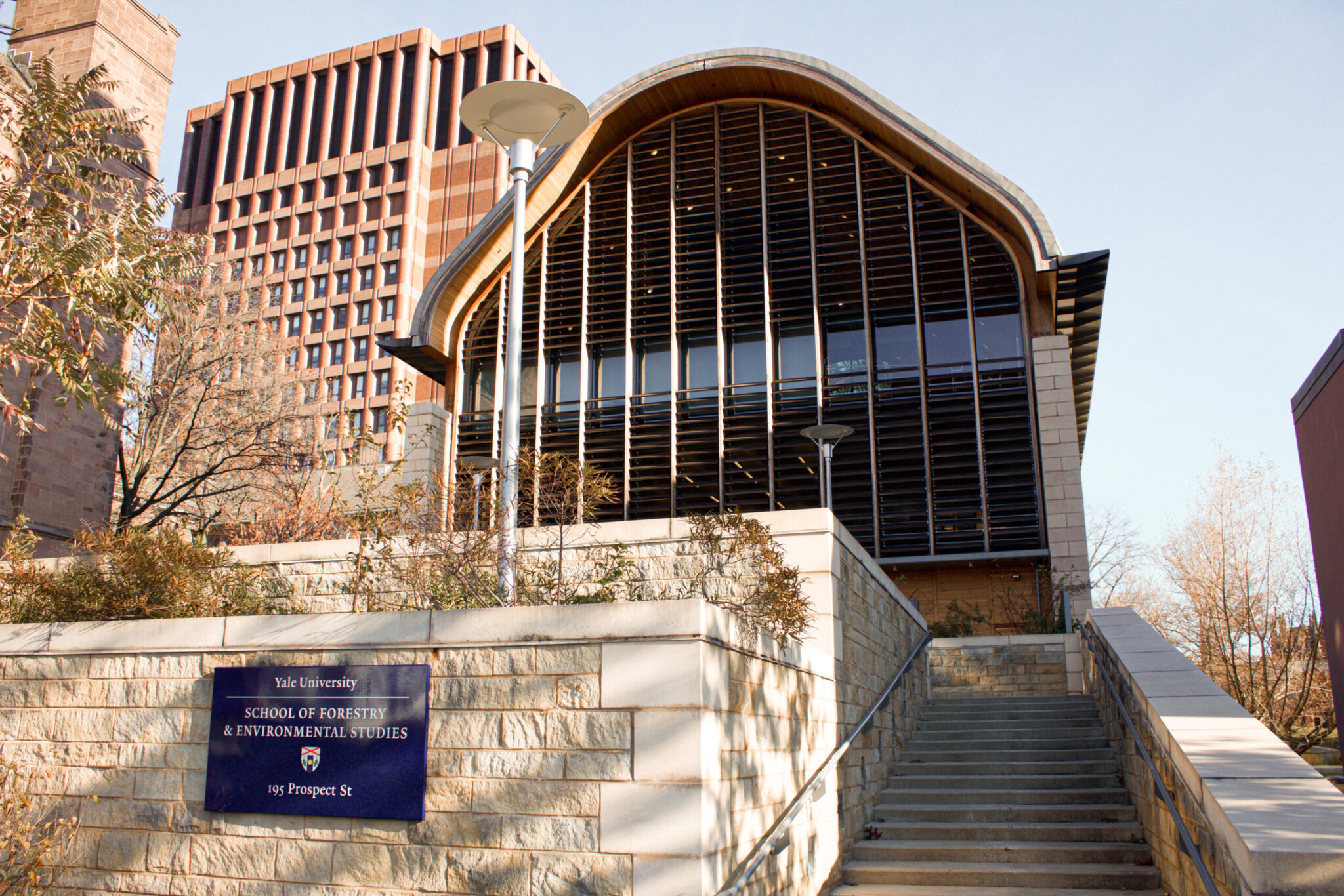Yale School of Environment models effects of climate change on global tropical forest loss
A recent study by researchers at the School of the Environment and Woodwell Climate Research Center offers a glimpse into potential climate scenarios and future forests.

Yale Daily News
If a tree falls in a forest with no around, it may still be modeled by the Yale School of the Environment.
A study co-authored by Yale researchers at the School of the Environment visualized global forest distributions to predict future changes in tropical biomass and the potential pace of climate change. While the model found that most tropical forests will likely remain intact, it forecasted a worrisome increase in atmospheric carbon emissions if improper forest management continues unchecked.
“We found that the effects of climate change on tropical biomass in general are not catastrophic, which is of course good news,” Maria Uribe, postdoctoral associate in the Paulo Brando lab, told the News. “However, there are important carbon losses that can increase drastically … if we don’t keep lowering our emissions.”
The findings are something of a mixed bag. While most forest spaces will not seem to lose significant biomass in the future, levels of resilience vary widely across the tropics. Michael Coe, co-author and senior scientist at the think tank Woodwell Climate Research Center, explained that the southeast swath of the Amazon rainforest was particularly vulnerable to biomass loss.
In a best-case scenario, the research found that forests could stand to capture up to 12 percent of aboveground carbon emissions. At worst, they could cause a 20.1 percent increase. Loss of biomass in the Amazon region would account for roughly 40 percent of all emissions.
“The project was an attempt to get an estimate of how much carbon could be lost only from changes in climate in the tropics,” Uribe wrote.
Uribe explained that such a model was not the first of its kind. Researchers have previously attempted to use vegetation to quantify carbon emissions, but most efforts had failed to capture the complexity of weather patterns or natural cycles and were riddled with uncertainties. While mathematically simpler, the team’s model better accounts for many of the earth systems such as drought and soil interactions.
The study was also novel in its expansive breadth. After modeling the forest space in northeast Brazil, the researchers at the Woodwell Climate Research Center realized they could map global forest density using just two factors—rainfall levels and dryness. This allowed them to create a temperature-sensitive model that directly linked aboveground biomass to changes in the climate.
Left unsolved, forest loss and rising temperatures have the potential to create a vicious feedback loop. Large-scale forest fires can contribute to changes in climate, which in turn alter their biomass composition. Climate change over the last 50 years led to forest losses that are equivalent to about 1.5 percent of the carbon reserves in 1950. Since warmer temperatures also slow the rate of photosynthesis, the world’s forests could be on track to lose 5.9 to 9.8 gigatons of carbon for every degree Celsius increase in temperature.
In the coming decades, shifts in climatic zones could lead to significant emission increases in the Americas and Asia even as parts of Africa become carbon sinks.
“We’re creating a system that is going to be very stressful for forests the way they are now,” said Maria Macedo, co-author at the Woodwell Climate Research Center.
Uribe added that the threats of “climate change, deforestation and forest degradation,” when compounded, could make the forests increasingly vulnerable.
The silver lining, though, is that there is still time to act. Macedo and Coe stressed that these models were “a big warning signal,” a reminder of the forests’ environmental significance, but also a helpful glimpse into the future that would hopefully inform policy decision-making. By making sense of the relationship between climate and forest disturbances, Macedo explained that the models would “[connect] these natural ecosystems to the climate problem.”
“I think the most important… next step in this research is to… use it,” said Macedo. “I think it’s a powerful way for people to visualize the changes that are coming.”
In the meantime, Coe suggested that proper management would be crucial to preserving what forest space remains. Priority should be given to protecting the forests that still exist and stewarding public land. He observed that forest restoration efforts, while attractive, do not nearly contribute as much to large scale change as we would expect.
In particular, the researchers emphasized that fire containment practices will need to improve.
Given that the model does not account for anthropogenic factors such as deforestation or fires, the research paper admitted that total carbon emissions were likely underestimated. Dry climates have also increased threats of wildfires in rainforests not usually at risk of burning, potentially threatening the survival of tree saplings. Macedo recognized that preventing fires would require resources, “new strategies” and a willingness to “[learn] from other parts of the world.”
“We’re on a trajectory for [fires] to be even … worse,” Macedo said. “[The model] still gives us some room to really think about how… we manage fires in the landscapes…while we do something about the global climate change problem.”
The world’s tropical forests lost a combined 11.1 million hectares in 2022.







